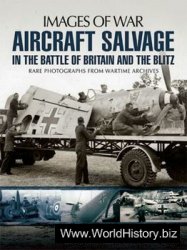Jean Rich establishes a carrier named for himself in late 1970 beginning all-cargo operations from his Miami base with a Beech 18 in January 1971. Three Curtiss C-46A freighters are acquired during the next four years as tramp freighter flights continue to destinations throughout the southeast, especially Atlanta.
En route from St. Petersburg, Florida, with a cargo of 9,000 pounds of dynamite on August 8, 1975, the crew of a C-46F discovers, when both engines stop, that the plane has not been refilled. A successful ditching is carried out in the sea.5 mi. NW of Aguadilla; both men are rescued.
In July 1976, Rich receives CAB certification as a supplemental and is renamed Rich International. All-cargo flights are authorized and some started in 1977-1978 between Miami and Atlanta and destinations in Canada, Mexico, Central America, and the Caribbean.
By 1979, the fleet has been increased to include not only the 2 surviving Curtiss Commandos, but also 4 Douglas DC-6As and 1 DC-8-33F. An engine failure causes the crew of a C-46Ato ditch their aircraft off the Bahamas on September 12; there are no fatalities.
For the year, 9.53 million FTKs are hauled, a figure that plunges by 26.5% in recessionary 1980 to 7.53 million. Still, profits are earned: $380,000 (operating) and $40,000 (net).
Three former USAF C-118As are purchased in 1981 and converted to civil DC-6A standard.
Cargo hauled increases to 11 million FTKs while the workforce is increased to 50. Revenues advance 8.4% to $6.38 million while costs, although up by 8.8%, are kept in check at $5.99 million. The operating profit is $393,000 and net gain is less than that of the year before, $15,000.
In early 1982, Rich is authorized to inaugurate passenger group charter flights. Two DC-8-55CFs are acquired and these are employed to launch passenger flights in July from both Florida and New York to Europe, the Caribbean, and Hawaii.
A total of 26,000 passengers and 3.6 million FTKs are operated during the remainder of the year.
Overextended with debts near $4 million and fighting the effects of the recession, Rich enters Chapter XI bankruptcy in June 1983, while continuing operations. Bookings climb 180.8% to 76,000.
On April 16, 1984, the FAA, after a safety audit, briefly suspends the 100-employee carrier’s operating permits, claiming “hundreds of safety violations” as a result of poor maintenance and bookkeeping. When these difficulties are resolved, the certificates are reinstated in mid-May and flights are resumed.
In the fall, the federal bankruptcy court approves a refinancing plan, whereby George Batchelor’s Batchelor Enterprises, parent of Arrow Air, contributes $1 million in loan capitalization. The arrangement grants Batchelor the right to acquire up to 50% shareholding at a time of his choosing.
Passenger enplanements fall 24.9% to 135,000 and the year’s losses are $608,643 (operating) and $1.1 million (net).
The payroll is increased by 21.2% in 1985 to 63 and the fleet now includes 3 DC-8-62s and 1 DC-6AF.
Still attempting to resurface from bankruptcy, the carrier’s passenger boardings fall 52.6% to 64,054. On the other hand, freight is down only 8.4% to 155.5 million FTKs. Revenues decline 17.4% to $12 million, but costs are down 29.1%. This happy inequality leads to an operating profit of $1.28 million and net gain of $1.06 million.
The employee population swells to 127 in 1986 as the Miami-based charter operator resumes its upward progress. A government fine, levied because company pilots have either not received appropriate training or have exceeded their flight time limitations, does not delay progress.
Customer bookings increase 58.1% to 101,577.
Passenger boardings zoom upward in 1987 by 34.9% to 143,856. Still, the year is not profitable as losses of $466,000 (operating) and $1.28 million (net) are suffered. Among the costs is another government fine—$30,000—once again due to excessive pilot flight times.
The workforce is cut by 9.4% in 1988 to 116.
Passenger boardings rise 2% to 105,452, but revenues fall 20% to $18.2 million. Although the operating loss jumps to $759,000, there is a net gain of $1.8 million.
Airline employment grows 29.3% in 1989 to 150, but passenger boardings fall 14.5% to 90,260. Revenues dip 6.3% to $17.08 million, expenses decline 19.5% to $15.28 million, and operating income of $1.8 million is realized. Net profit dips to $1.32 million.
Neither fleet nor employee count is changed in 1990. One of the DC-8-62s is employed during the fall to begin a new transatlantic package service on behalf of the Swiss tour operator Ferien-Service.
The federal government again fines the airline after inspectors learn that pilots have not received required training, check pilots have not maintained appropriate records, and pertinent information has been omitted from required reports.
The traffic free fall continues. Customer bookings plunge 60.5% to 30,000 and revenues drop 41.3% to $10.03 million. Fortunately, expenses are down 36.4% to $9.72 million and allow an operating profit of $311,042. A net loss of $510,836 is, however, suffered.
Company employment is cut by 33.3% in 1991 to 100 and the fleet now includes 2 DC-8-62s.
Passenger boardings skyrocket 150% to 75,304 and revenues zoom upward a spectacular 153.8% to $25.47 million. Expenses rise by an even greater percentage, 159.3%, to $25.21 and allow an operating profit of $258,093. Net gain reaches $810,375.
Fifty new employees are hired in 1992 and the fleet is more than doubled by the addition of a DC-8-63 and three Lockheed L-1011 TriStar 1s, the latter from the assets of Eastern Air Lines.
As a consequence, customer bookings surge 128% to 171,000. Revenues hit $40.2 million, but expenses are more and an operating loss of $126,396 is taken. There is a net profit of $741,823.
In 1993, Rich President William Meenan oversees a workforce of 253. The fleet comprises the 3 ex-EAL Lockheed L-1011 TriStar 1s, 2 DC-8-62s, and 1 each DC-8-63 and L-1011-500. The latter is newly acquired, but previously operated by the German charter operator LTU (Lufttransport Unternehmen, KG.). In addition to a scheduled route between New York and Georgetown, Guyana, the carrier continues to operate worldwide civilian and military charters from Miami to Brazil, Argentina, and Lisbon and from Orlando to Glasgow, Belfast, and London (LGW).
Passenger boardings increase another 112.7% to 363,678 and revenues swell 19.4% to $47.97 million. Expenses are up 21.1% to $48.8 million and the operating loss climbs to $830,488. There is an $874,000 net loss.
In early 1994, Rich receives government authority to inaugurate combination passenger and cargo scheduled services and these are duly launched between Miami and New York. All of the aircraft involved wear a new, more up-to-date livery.
For the year, customer bookings increase 58.2% to 576,000. Operating revenue jumps 67% to $98.83 million while expenses surge 61% to $95.26 million. The operating surplus is $3.57 million and there is a $1.11-million net gain.
The workforce stands at 250 in 1995, a 25% increase. When Hawaiian Airlines (HAL) replaces its L-1011-50 with a former American Airlines DC-10-10, the displaced TriStar is sold to Rich.
A major contract is entered into with Fort Lauderdale-based Adventure Tours to fly skiers to Colorado.
Enplanements skyrocket 77.7% to 1.01 million. Still, costs exceed income and there are losses: $17.78 million (operating) and $995,000 (net).
There is no change in the employee population during 1996 and early in the year, Rich is elevated to the rank of “national” carrier by the DOT. Dissatisfied, Adventure Tours refuses to renew its contract for the upcoming ski season.
In the wake of the May Valujet Airlines disaster, Rich, like Mesa Air Group, runs afoul of FAA inspectors. Following a spot check, the FAA in June attempts to fine Rich $2.6 million for maintenance problems relating to bogus aircraft parts. The company contests the fine and the issue is left hanging.
During a two-day safety audit in August a large number of errors and safety violations are cited, including violations in pilot training, handling of hazardous materials, unqualified individuals performing inspections, failure to submit required reports and maintain required records. Additionally, a number of maintenance deficiencies are noted, including a startling revelation that all engine installations since January have been made in violation of federal regulations.
For these and an L-1011 engine incident earlier, the FAA issues an emergency order suspending the charter operator’s license on September 2 and issues the carrier two fines, one for $95,000 and the other for $2.6 million—a repeat of the June order.
Hundreds of charter passengers are left stranded, including a large number flown in and out of Ontario to Hawaii on behalf of the San Jose-based tour company Sun Trips International. Rich is forced to file for Chapter XI bankruptcy protection in November.
Customer bookings decline 4.1% to 970,000, but operating revenues inch up 1.9% to $154.88 million. Expenses increase 9.7% to $186.23 million and the operating loss quadruples to $17.78 million. The net loss is $4.29 million.
Rich is once again sanctioned by FAA inspectors in January 1997, just as it is preparing to resume operations and is shut down once more. Although an accommodation with the safety inspectors is reached in February, another DOT office refuses to provide the necessary economic authority to resume flying, requiring Rich to meet further conditions. Unable and unwilling to proceed, officials and creditors convert Chapter XII bankruptcy to Chapter VII liquidation. All remaining company inventory and aircraft are auctioned off in July.
RICHARDS AVIATION: United States (1980-1994). Richards is established to provide scheduled weekday all-cargo flights linking the company’s base at Memphis with Corinth, Mississippi. Revenue flights, together with charter and contract service operations, are inaugurated in 1980 with a Piper PA-34 Seneca and a Gates Learjet 35.
Services continue and, in 1993 and T. Michie Hill is president.
The company shuts its doors in 1994.
RICHMOR AVIATION: United States (1991-1995). Richmor is established at Hudson, New York, in late summer 1991 to offer scheduled regional flights to 10 cities with a fleet of 3 Convair CV-580s and 2 Mohawk 298s. A contract is signed with Trans World Airlines (TWA) and “TWExpress” service is inaugurated in October.
The fleet in 1993 includes 5 CV-580s and 3 Nords. The fourth Mohawk 298 arrives in 1994. Unable to maintain economic viability, the company shuts down in 1995.




 World History
World History









